Carbon as graphite is the softest of natural substances. Natural graphite may be crystalline flake graphite that forms planes of cyclic, with atoms of carbon arranged in a honeycomb lattice, amorphous, and lump graphite. Natural graphite, mined and then refined, may contain up to 98% of carbon. It is opaque, black, and conducts electricity well so is used, for example in arc lamp electrodes. Natural and synthetic graphite is a good dry lubricant: despite being in the solid phase it reduces friction between surfaces that are sliding against each other. Graphite, which was earlier called black lead or plumbago has been used in steelmaking, brake linings, as a recyclable anode in batteries, as a lubricant in air compressors, railway track joints, ball bearings, for lining molds for cannonballs, and also in food industry. Graphite has been used for decorating pottery since the 4th millennium B.C. Synthetic graphite serves as a matrix in nuclear reactors. Carbon nanotubes reinforce plastics and thus many commercial articles.
A Story about a Pencil
Sticks of graphite are used as the handwriting material in pencils. Henry Petroski (1992) described in a monographic way a history of the pencil design and its circumstances. According to Petroski, deposits of graphite, that was thought a form of lead, were found in Cumbria, England about 1565. At that time, the Crown – the corporation sole in England, guarded graphite because it could be used to line the cannonballs, so it had to be smuggled out for use in pencils or for marking sheep. There were at first many confusing names for a pencil. Cannabis hemp fibres with clamps of plumbago (an old-fashioned term for graphite) were used in pencils. In his letter of 1586, William Camden’s wrote, “Here also is found abundance of that mineral earth, or hard shining stone, which we call Blacklead, used by painters in drawing their lines and shading” (cited after Petroski, 1992, p. 46). In the 17th century pieces of plumbago were held in brass and silver cases with Baroque designs; early wood-cased graphite changed into pencils in the shape of octagonal shaft of wood. Black lead was discovered in the black-lead mine of Cumberland (which is now exhausted) and also imported from the Balearic Islands, Ceylon, Bohemia, and Sicily. In 1795 Nicolas Jacques Conté discovered the process of mixing graphite dust with clay, so the pencils could be made in variety of hardness; it was universally used for making pencils called Conte crayons. In the 19th century Johann Faber used Siberian graphite that was 94.5% pure. In 1800 in Concord, Mass., an unknown woman mixed plumbago with English red chalk; this was the beginning of first pencils made in America (Petroski, 1992). Although lead is not used for writing, there were many lead poisoning cases in the 20th century because of the lead content in the pencils’ lacquer outer coating; people ingested lead by sucking and chewing pencils (Life, 1972).
Pencils can come in different hardness. The hardness of a pencil determines the darkness of the line it will produce. Pencils are graded with the letters H for hardness and B for blackness. The hardest pencils are 9H and go down until 2H. An F pencil is the middle of the hardness scale. It then goes to HB, or the #2 pencil, which is the most common pencil. It contains more graphite than clay and will leave a dark mark. The Bs start at 2B and go to 9B, which is the softest and leaves the darkest mark (Simmons, 2000, after my student, Spencer Adamson).
Charcoal drawings in caves were inspiring for artists; for example, Pablo Picasso drew inspiration from the Lascaux caves and the German film director and screenwriter Werner Herzog from the Chauvet cave. A pencil has become a tool for its own medium, a metaphor and even an object for auto identification. The French artist Henri de Toulouse-Lautrec (1864-1901) had reportedly said of himself, “I am a pencil.” The American painter Andrew Wyeth (1917-2009) described his pencil as “the fencer’s foil.” The Moscow-born Paris illustrator and caricaturist Emmanuel Poiré took his pseudonym after the Russian word for pencil, karandash. In turn, a Swiss pencil-making firm was named Caran d’Ache after this artist (Petroski, 1992, p. 6).
A British painter David Hockney argues that an artist has to be able to draw before anything else could be achieved (cited McCall Smith, 2010). David Hockney presented studies on imaging techniques (Hockney 2006/2001). In the eighties he drew with the Quantel Paintbox (a computer program that allowed the artist to sketch directly onto the screen), and then, since 2009 he draws and paints on the iPhone and the iPad using the Brushes application. He suggests that touchscreen devices such as the iPhone, the iPad, or other tablets would bring back drawing, and believes that the use of drawing as an instant communication tool would increase, because children grow with computers. Hockney is considered the first acknowledged artist using the networkable new media with portable applications running independently from the computer’s operating system.
Hockney, D. (2006). Secret Knowledge: Rediscovering the Lost Techniques of the Old Masters. Studio; Expanded edition. ISBN-10: 0142005126
McCall Smith, A. (2010). The Unbearable Lightness of Scones (44 Scotland Street). New York: Anchor.
Simmons, M. (2000). The pencil hardness test. Woodwork 16,1, p. 76. Retrieved January 10, 2014, from http://www.pencilpages.com/articles/simmons.htm
Computer versus Pencil
We often compare a human brain to a computer, when we want to examine how it works and succeeds in doing various things such as art, for example. Visual thinking includes the perceptual and cognitive activities that involve mental imagery – an internal image representation that can be supported by external visualizations, the displaying of information either on a screen or paper, and saving the gained knowledge. Many claim that with digital imaging, where every step in a code execution clearly defines the next step, all worries about the creative process would disappear. However, there are many personal, psychological, cognitive, phenomenological, and aesthetical factors that result in the conflicting attitudes toward digital versus traditional image presentation. With all approaches and techniques adopted in digital imaging, some believe that freehand drawing can help in a search for finding, as the song tells, ‘who you really are.’ They ponder whether digital drawing techniques serve well for inspiration or attaining perfection, and feel more unrestrained when they spontaneously react to natural beauty by showing shapes, colors, and light.
Somebody argued that it is hard to imagine an immense quantity of information and a great number of art works that can be created with just one pencil. Otherwise, one may transfer pencil drawings to the computer memory to make them a part of a larger whole and then use the computing techniques. Others believe that in the present state of digital technology there is no need to draw freehand because any photograph can be altered at will. Digital imaging adds an option of mimicking traditional media combinations, so the image may look like an artwork created in any medium: oil painting, a wet in wet watercolor, or a dry-brush painting; one can argue there is no need to learn and teach drawing. Visual representation of information, data, or knowledge called infographics, as well as conceptual or scientific information make good use of the precision coming up with a computer code or the 2D and 3D graphics transformations. In computer art one can teach a computer to draw.
If we would like to inspect processes of visualizing concepts, conveying knowledge, or creating art we may return to a simplest comparison: which activities can we perform better when we use the computer instead of a traditional tools such as a pencil. Below are students’ opinions that took form of a collective statement.
One can find many circumstances in which one can better act with a computer. In animation we can do it by redrawing and pasting only changed portions of the image or using software capable of animating an image. Also, we have so many kinds of software capable of animating an image. We have ability to edit, without having to rewrite it from scratch, as changing or erasing is easier and cleaner, with the touch of a button or a mouse. We have the option of using different fonts, styles, colors and formats and we are able to copy and paste many times. Color mixing is faster and inexpensive, may be done with the use of additive or subtractive processes. 3D image transforming and manipulation is possible, by rotating, zooming, using proportional selection, distorting, placing in foreground or background, etc. Perspective drawing is quicker due to moving objects and changing relative sizes. Patterns can be done easier, for example, with the use of a lines and an airbrush tool. Magnifying a part of an image helps to work on the details.
Now for the advantages of using a pencil: it has been around for thousands of years and many believe that it will never become totally extinct. When we do the work with a pencil or other tools for drawing, we often feel more free and unrestrained when we use it for reacting to natural beauty by showing perfect shapes, vibrant colors, and light. Also, it is available to everyone; many times it is easier to find a pencil at hand, so we are ready to spontaneously scrabble and sketch. Possibly, tools for drawing on a computer screen serve us better for creating more conceptual, abstract works. Fortunately, we may transfer our pencil drawings to the computer memory using a scanner or a digital camera, and then make them a part of a larger whole by combining techniques that are available to us on a computer. And finally, a pencil will never become an outdated piece of hardware. All in all, everyone can select the best tool for the job and use the computer as a tool when working on a project that involves writing skills, simple artwork, or reworking the visual material by computing. The pencil may be a preferred choice when one wants to be more spontaneous using one’s creative experience. Many times if the project requires a drawing, one would sketch it first before going to the computer. Maybe a combination of the two tools would be the best option.
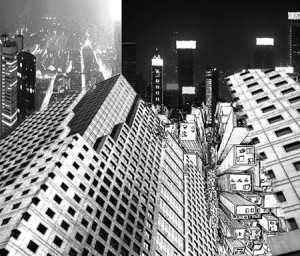

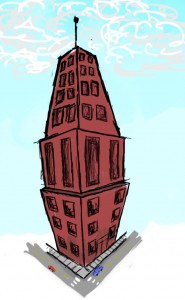
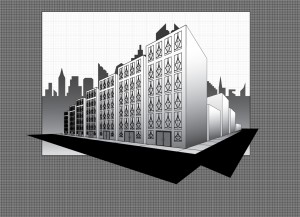

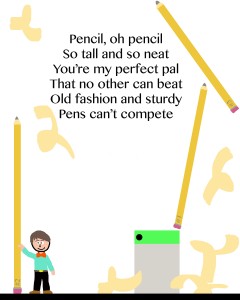
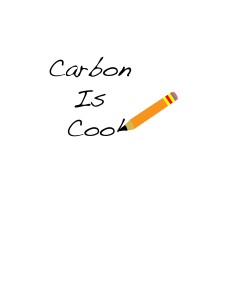
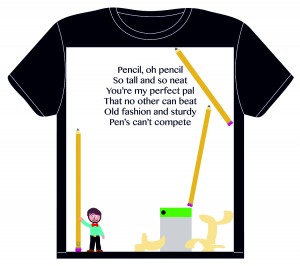
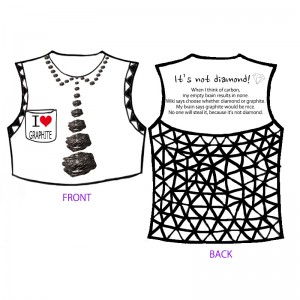
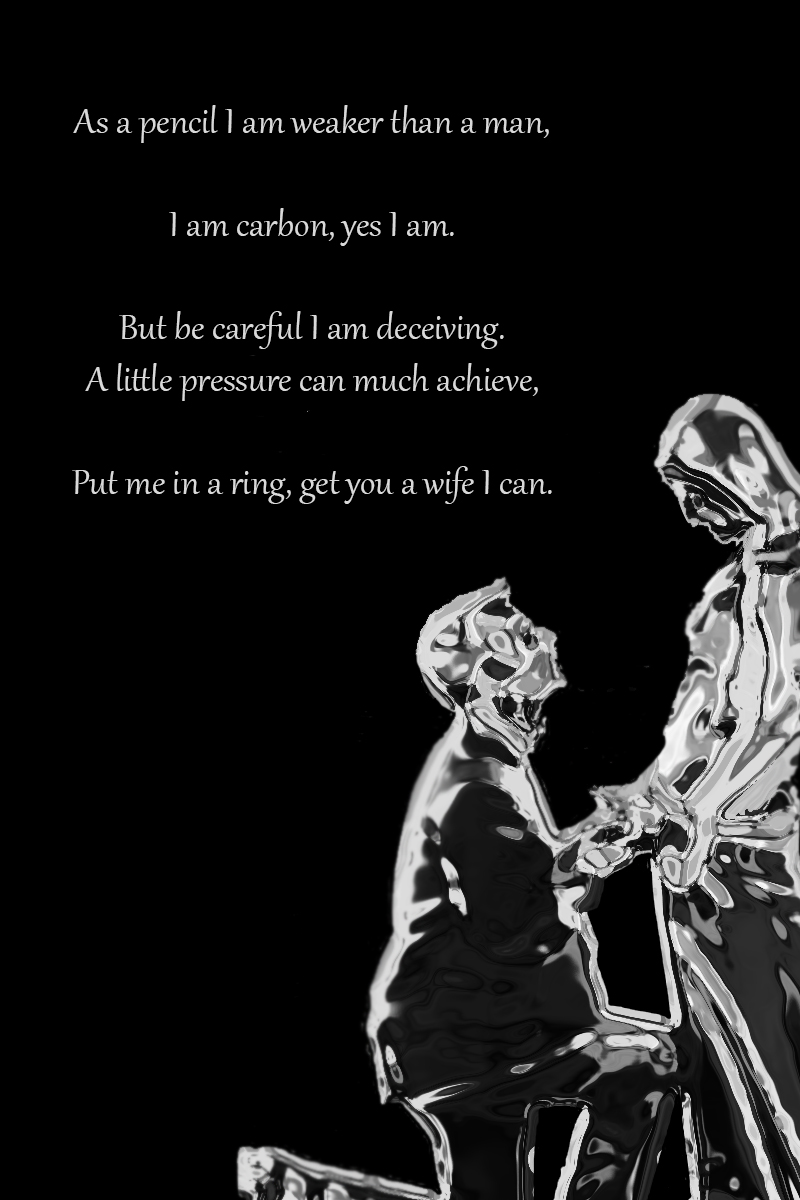
There is a hint of Imagination in all of us.